Circuit-Zone.com - Electronic Projects
Posted on Friday, April 11, 2008 • Category: Amplifiers

GainClones have VERY few components and this one is based on the National Semiconductor LM3875 IC. The PCBs and components are very simple and quick to make, only took about 20 mins to assemble both amps and rectifier board. DC offset was about 80mV on one channel and about 40mV on the other. I used the optional Ci capacitor in the national datasheet for the IC which reduced it to between 0-4mV: This is the capacitor I chose, its an Elna Starget (expensive). The case was MUCH more time consuming and difficult to make though. I bought all the aluminum from a scrap metal yard including the heatsink. I got my aluminum panels cut at a sheet metal shop as I cant make straight cuts with a hack saw.
Posted on Thursday, April 10, 2008 • Category: Frequency Wave Generators
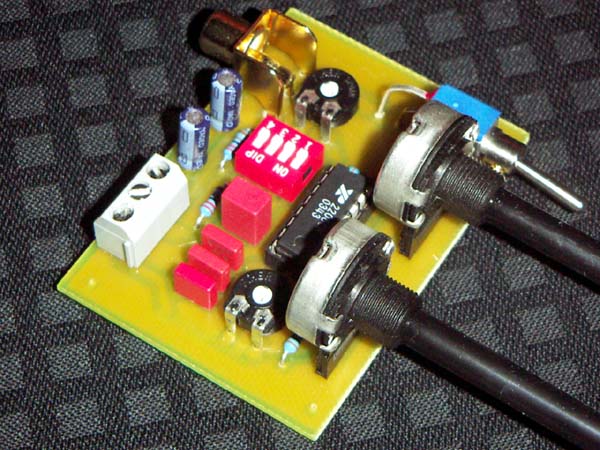 Frequency Generator is an essential laboratory equipment for every electronic. It allows a variety of measurements and experiments. The module described here is based on high quality XR2206 IC and is extremely compact and inexpensive. Output frequency is from 1Hz to 1MHz. It provides sine, square and triangle waves around 1Hz to 1MHz, depending on the timing capacitors used. Over two Potentiometers the amplitude and frequency can be set. About trimmers can also have the purity of the sine signal and the offset of the output voltage can be changed.
Posted on Thursday, April 10, 2008 • Category: Phone Circuits
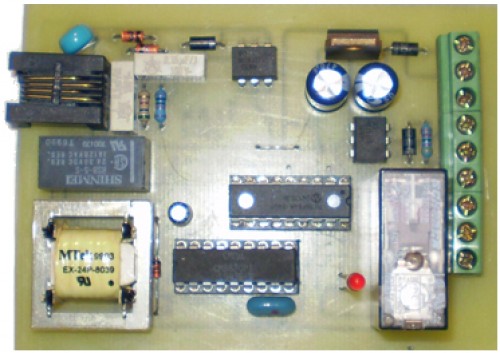 It might be "yet another" «device» controller that operates over phone-line, but this one works for sure :) The task was to build a device that connects to the phone line and has a relay as an output switch. It should also sense if the connected «consumer» is turned-on or off and report to the administrator at the other end of the phone line. The administrator would then call-in the device, log in with the password, and check the state of «consumer», turn it on or off, change password or some other settings. Current version has only one relay.
Posted on Thursday, April 10, 2008 • Category: PC Circuits
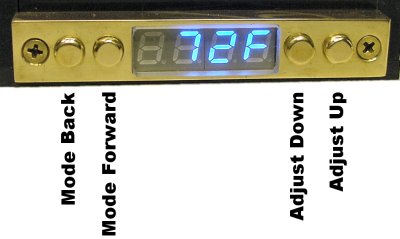 Each fan turns off when the temperature drops 5 degrees below its turn-on temperature. For example, if the dial is set to 80 degrees, the fan turns on at 80 degrees and turns off at 75 degrees. This prevents the fan from cycling on and off rapidly, which would occur if the fan turned on at 80, started to cool the cabinet, and then immediately turned off at 79.
Posted on Thursday, April 10, 2008 • Category: PC Circuits
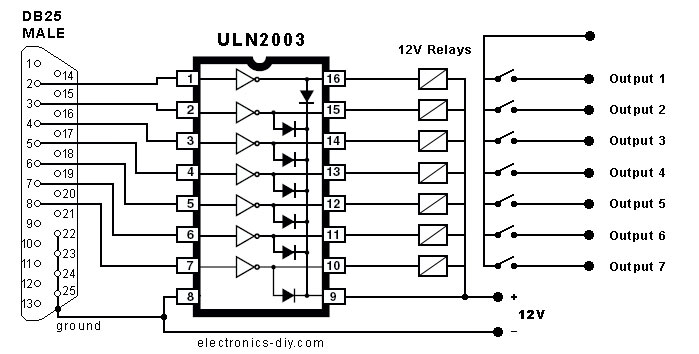 This is a very easy and fun to build project that will allow you to control up to eight external devices through your computer's parallel port. You may for instance control different appliances such as lamps, computers, printers, tv sets, radios, music systems, air conditioners, air fans, garden sprinklers and anything else you can think of, all through your computer.
You can do a simple test by connecting a LED directly to a ground and any PINs 2 through 9 of your parallel port. The voltage on the parallel connectors is around 4.5V but it drops to around 2V once you connect the LED. You may use a 100 Ohm resistor if you want to, but it is not necessary since the current is very low.
Posted on Thursday, April 10, 2008 • Category: FM Transmitters
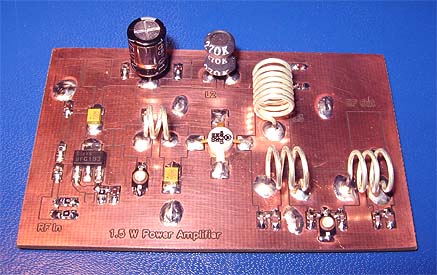 This project will explain the basic function of a class-C transmitter. I will explain how to dimension a transmitter and the purpose of the different components. I will also explain how you can build a 1.5W PA transmitter. The project will include PCB, components and instructions how to make coils, assembly and testing.
Posted on Thursday, April 10, 2008 • Category: FM Transmitters
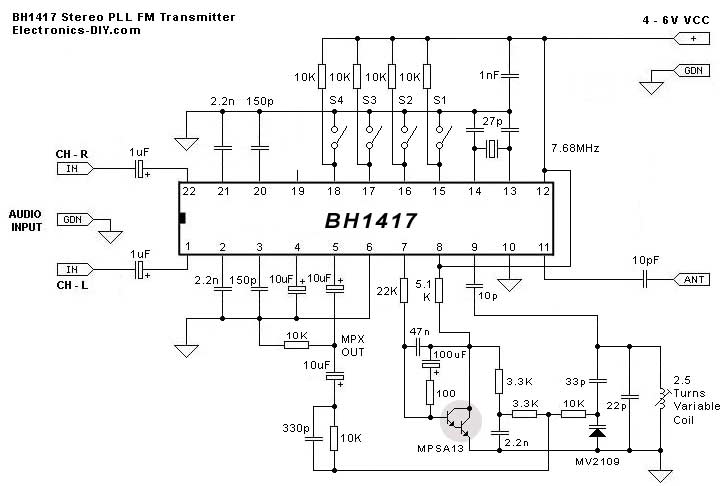 This is the latest BH1417 FM Transmitter design from RHOM that includes a lot of features in one small package. It comes with pre-emphasis, limiter so that the music can be transmitted at the same audio level, stereo encoder for stereo transmission, low pass filter that blocks any audio signals above 15KHz to prevent any RF interference, PLL circuit that provides rock solid frequency transmission (no more frequency drift), FM oscillator and RF output buffer.
There are 14 possible transmission frequencies with 200KHz increments that users can select with a 4-DIP switch. Lower band frequencies start from 88.7 up to 89.9 MHz, and upper band frequencies start from 107.7 up to 108.9 MHz.
Posted on Wednesday, April 9, 2008 • Category: Phone Circuits
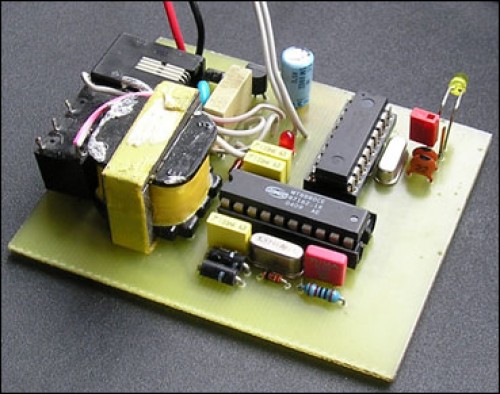 Just hook this Alarm Phone Dialer up to something you would like to monitor, for example, a high water alarm, low temperature alarm, back window, garage door, etc. When the system is activated it will call a number of programmed numbers to let you know the alarm has been activated. This would be great to get alerts of alarm conditions from your home when you are at work. The microcontroller code is provided on the site.
Posted on Wednesday, April 9, 2008 • Category: Antennas
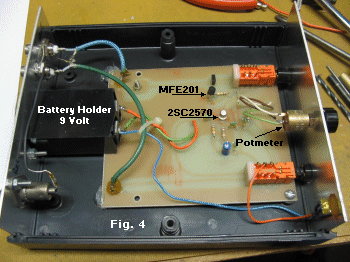 If you have a shortwave or high-frequency receiver or scanner that is struggling to capture signals with a short, whip antenna, and you'd like the kind of performance that a 60-foot 'longwire' antenna can provide but lack the space to put one up, consider building the AA-7 HF/VHF/UHF Active Antenna described in this article. The AA-7 is a relatively simple antenna that is designed to amplify signals from 3 to 3000 MegaHertz, including three recognized ranges: 3-30Mhz high-frequency (HF) signals; 3-300Mhz very-high frequency (VHF) signals; 300-3000MHz ultra-high (UHF) frequency signals. Those bands are typically occupied by shortwave, ham, government, and commercial radio signals.
Posted on Wednesday, April 9, 2008 • Category: Remote Control
On these pages, I will introduce Remote Controller with Radio Frequency. The electric wave sending-out is controlled with the code by PIC for transmission and the code is deciphered by PIC for receiving.
Circuit-Zone.com © 2007-2025. All Rights Reserved.
|